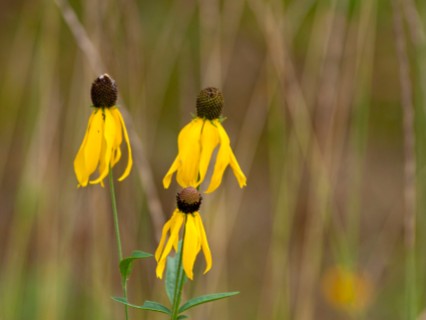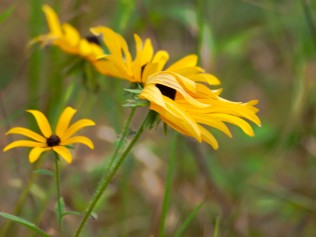The Rule of Thirds is one of the most established principles of photographic arrangement. Its nine equal boxes dictate how the human eye responds to placement and dynamics of movement. If our eye lands on the wrong junction, our brain responds with a shot of bland. Throw in a pleasing curve, or place the subject off to either the left or right third of the arrangement and the brain responds favorably.
I photograph things that tend to be, well, busy. Lots of textures. Trees, prairie grasses and flowers, rows of corn growing, piles of fallen leaves. I work sitting on the ground, or flopped on my belly. Neither position allows for moving easily to find that sweet spot in the lens. These prairie flowers were shot at Aldo Leopold’s Sand County property near Baraboo, Wisconsin.
When I get my subject in focus it rarely stands alone. Wind blown plants wave behind and in front of my little beauties. Rarely does one tree stand alone, unless it has fallen and begun the slow process of breaking back to feed earthly creatures. Weather interferes. I haven’t shot a portrait in over ten years a still life in over five. Point the camera at one of my critters and they immediately move.
My half-fast rule is, if a third of my shots are keepers, I’m happy. I live with lovely, wild, natural bokeh. On a great day, I get close to a rule of 2/3. I’ve learned to live with it. Let me know what rules you’re willing to break. Thank for stopping by again.
I’ve just starting posting different works on a new photo site, ViewBug – Charly Makray-Rice .
Weekly Photo Challenge:Rule of Thirds











